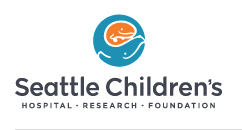A Multi-site Randomized Controlled Trial Comparing Regional and General Anesthesia for Effects on Neurodevelopmental Outcome and Apnea in Infants
| Status: | Active, not recruiting |
|---|---|
| Conditions: | Gastrointestinal |
| Therapuetic Areas: | Gastroenterology |
| Healthy: | No |
| Age Range: | Any |
| Updated: | 11/16/2018 |
| Start Date: | October 23, 2006 |
| End Date: | January 2019 |
A Multi-site Randomised Controlled Trial Comparing Regional and General Anaesthesia for Effects on Neurodevelopmental Outcome and Apnoea in Infants
The primary purpose of the GAS study is to determine whether different types of anesthesia
(Regional versus General) given to 720 infants undergoing inguinal hernia repair results in
equivalent neurodevelopmental outcomes. The study also aims to describe the incidence of
apnea in the post-operative period after both regional and general anesthesia for inguinal
hernia repair in infants. This study is important as it will provide the greatest evidence
for safety or toxicity of general anesthesia for human infants.
(Regional versus General) given to 720 infants undergoing inguinal hernia repair results in
equivalent neurodevelopmental outcomes. The study also aims to describe the incidence of
apnea in the post-operative period after both regional and general anesthesia for inguinal
hernia repair in infants. This study is important as it will provide the greatest evidence
for safety or toxicity of general anesthesia for human infants.
This is a prospective, observer blind, multi-site, randomized, controlled, equivalence trial.
The general anesthesia group will receive sevoflurane (intervention drug) for induction and
maintenance of general anesthesia, dose up to 8% inspired for duration of procedure plus
bupivacaine local anesthetic blockade (up to 2.5 mg per kg) administered via caudal or
ilioinguinal nerve block. The airway can be maintained with a face mask, laryngeal mask or
endotracheal tube, with or without neuromuscular blocking agents.
The regional group will have no sedative agent. The regional blockade may be with spinal
alone, spinal block with caudal block, spinal with ilioinguinal block or caudal alone. The
maximum dose of 2.5 mg per kg of bupivacaine can be used.
The general anesthesia group will receive sevoflurane (intervention drug) for induction and
maintenance of general anesthesia, dose up to 8% inspired for duration of procedure plus
bupivacaine local anesthetic blockade (up to 2.5 mg per kg) administered via caudal or
ilioinguinal nerve block. The airway can be maintained with a face mask, laryngeal mask or
endotracheal tube, with or without neuromuscular blocking agents.
The regional group will have no sedative agent. The regional blockade may be with spinal
alone, spinal block with caudal block, spinal with ilioinguinal block or caudal alone. The
maximum dose of 2.5 mg per kg of bupivacaine can be used.
Inclusion Criteria:
- Any infant scheduled for unilateral or bilateral inguinal hernia repair (with or
without circumcision)
- Any infant whose gestational age is 26 weeks or more (GA = 182 days)
- Any infant whose post-menstrual age is up to 60 weeks (PMA = 426 days)
Exclusion Criteria:
- Any child older than 60 weeks post-menstrual age
- Any child born less than 26 weeks gestation
- Any contraindication to general or spinal/caudal anesthesia (for example:
neuromuscular disorder or coagulopathy)
- Pre-operative ventilation immediately prior to surgery
- Congenital heart disease that has required ongoing pharmacotherapy
- Known chromosomal abnormality or any other known acquired or congenital abnormalities
(apart from prematurity) which are likely to affect development
- Children where follow-up would be difficult for geographic or social reasons
- Families where English is not the primary language spoken at home
- Known neurological injury such as cystic periventricular leukomalacia (PVL), or grade
3 or 4 intra ventricular hemorrhage (ICH) (+/- post hemorrhage ventricular dilation)
- Previous exposure to volatile anesthesia or benzodiazepines as a neonate or in the
third trimester in utero.
We found this trial at
11
sites
Dartmouth Hitchcock Medical Center Dartmouth-Hitchcock is a national leader in patient-centered health care and building...
Click here to add this to my saved trials
Children's Hospital of Philadelphia Since its start in 1855 as the nation's first hospital devoted...
Click here to add this to my saved trials
Click here to add this to my saved trials
Click here to add this to my saved trials
Click here to add this to my saved trials
Click here to add this to my saved trials
Children's Medical Center of Dallas Children's Medical Center is private, not-for-profit, and is the fifth-largest...
Click here to add this to my saved trials
Click here to add this to my saved trials
Vanderbilt Children's Hospital Monroe Carell Jr. Children's Hospital at Vanderbilt is one of the nation's...
Click here to add this to my saved trials
Click here to add this to my saved trials
Seattle Children's Hospital Seattle Children’s Hospital specializes in meeting the unique physical, emotional and developmental...
Click here to add this to my saved trials




